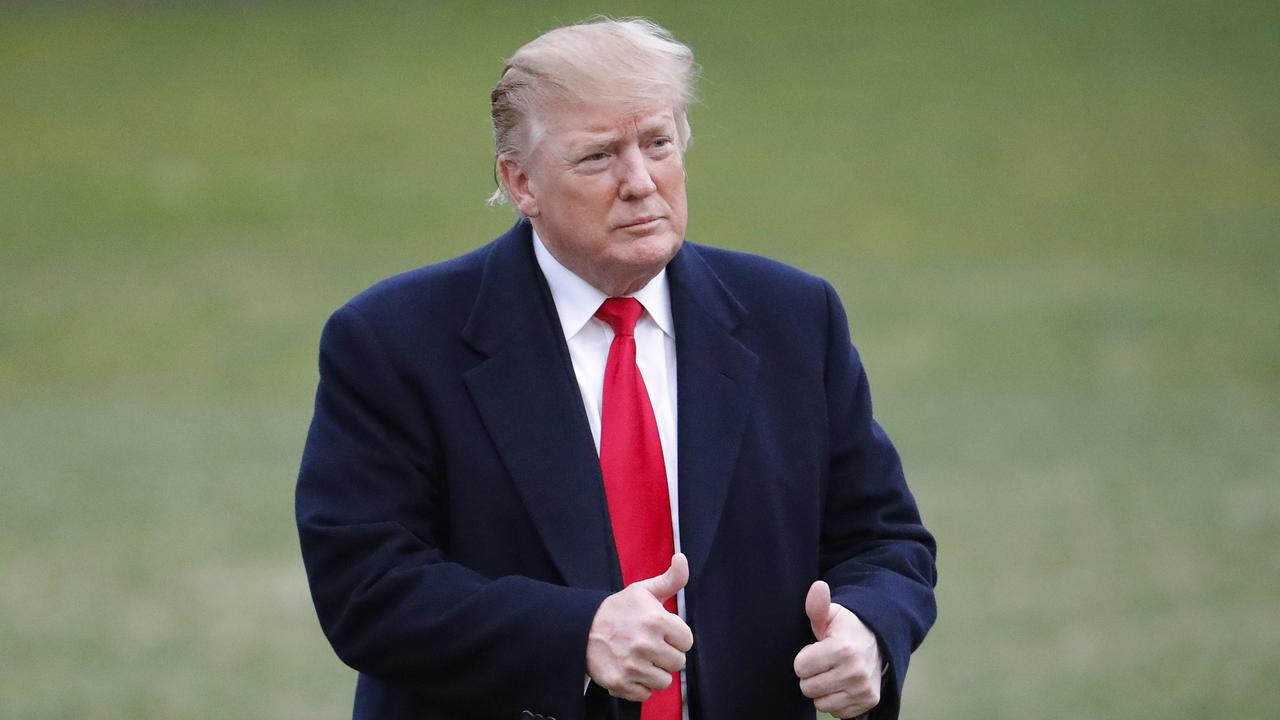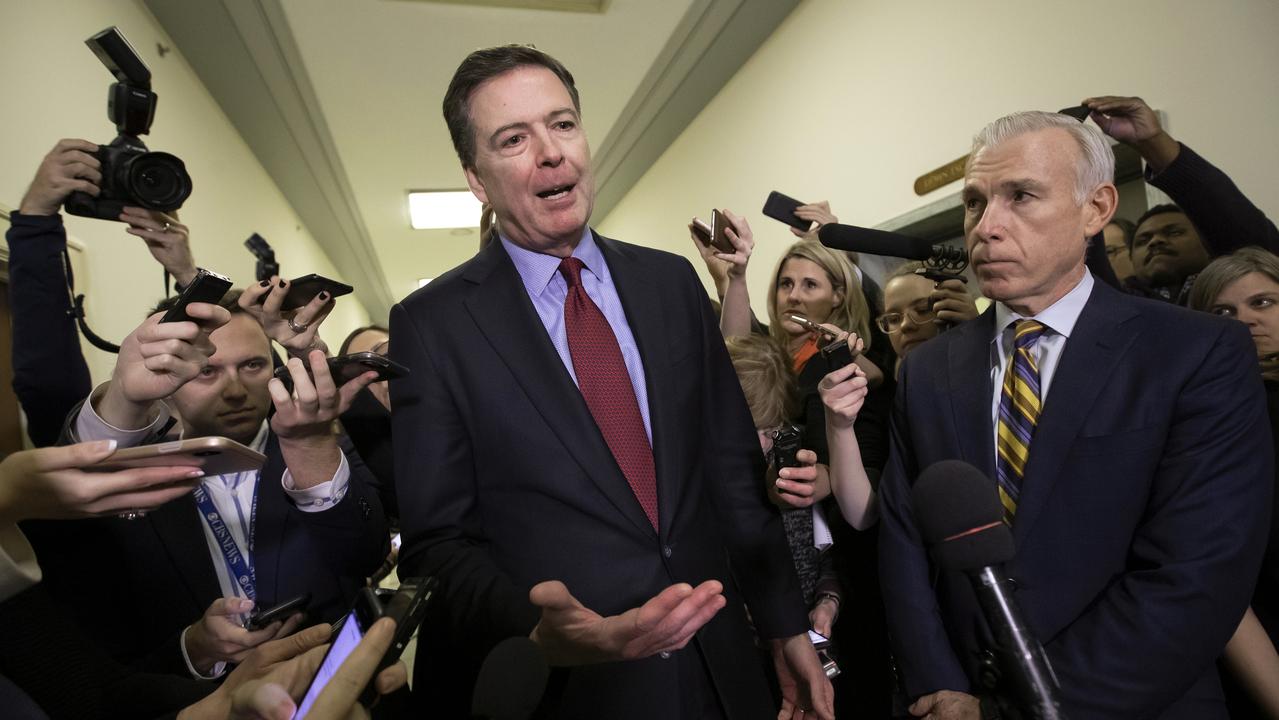
Afghanistan barely rated a mention from Donald Trump or Hillary Clinton during last year’s US presidential campaign. But Trump has been on record for years as a critic of the conflict, condemning its cost in resources and lives, and complaining about Pakistani support for militants.
Recently, he also reportedly asked business leaders how the US — through mineral exploitation, commercial concessions, or straight-up reparations — might recoup some of the roughly $1 trillion spent since 2001.
But his most consistent attitude has been refusing to accept responsibility for a war, originated by George W. Bush and deepened by Barack Obama, that he regards as a failure.
That changed this week: like it or not, Afghanistan is Trump’s war now.
The President’s prime-time address on Monday, delivered from a military base near Arlington Cemetery (where 400,000 war dead, including 800 from Iraq and Afghanistan, are buried) was short on detail. But the message was clear. Trump was reversing himself — going against his instinct, he said — to take ownership of the war, disavow previous calls for withdrawal and commit to victory.
The speech was a triumph for those in the White House and Pentagon, including national security adviser HR McMaster and Secretary of Defence Jim Mattis, who have urged the President to focus on stabilising Afghanistan against a resurgent Taliban, al-Qa’ida and Islamic State. His definition of success, “an honourable and enduring outcome, worthy of the enormous price so many have paid”, could have come directly from McMaster’s pen.
The President’s refusal to commit to a timetable or frame the strategy in terms of troop numbers also represented a deliberate choice that advisers such as Mattis have advocated — escaping the “surge” approach, adopted in different ways by Trump’s predecessors, which held US strategy hostage to public timelines and troop ceilings. Likewise, the President’s speech was a defeat for those — including recently ousted strategist Steve Bannon — who had called for rapid withdrawal or for outsourcing the conflict to contractors.
One such contractor, Erik Prince (brother to Education Secretary Betsy DeVos and former head of private military company Blackwater), even advanced a plan to appoint a neo-colonial viceroy and deploy a contract army similar to that of Britain’s 19th-century East India Company. Trump was rumoured to be considering that idea (which appalled many in Washington, not to mention the sovereign government of Afghanistan) but decided against it. Prince, predictably, panned the President’s policy the day after the speech.
Still, the fact the President even considered such outside-the-box proposals reflected a robust debate within the administration, to which Bannon, a student of military history, was a key contributor.
Equally importantly, it showed a national security staff able to generate and present options for the President. That debate was resolved only three days before the speech, in a showdown at the presidential retreat at Camp David. Bannon’s views may have annoyed military chiefs, but his involvement undoubtedly was healthy since he clearly was willing to ask tough questions, critique assumptions and challenge received wisdom on America’s longest active war, now entering its 17th year.
In fact, Afghanistan is not the US’s longest conflict: that dubious distinction goes to Korea, technically at war since June 1950, though not an active combat theatre since the 1953 armistice. Korea clearly has been important for the Trump national security team’s thinking on Afghanistan. Before the speech, National Public Radio’s Pentagon reporter Tom Bowman asked an official how long the President’s team expected the Afghanistan commitment to last, and was told: “How long have we been in Korea?”
Indeed, Korea epitomises the alternative model that military leaders have long advocated.
US forces have been on the peninsula since 1945, with a US military government taking over South Korea immediately after the Japanese surrender, an advisory mission until 1950, major combat in 1950-53, and a sustained (though gradually diminishing) stabilisation presence for more than six decades since then. The permanent US force in South Korea now numbers 28,500 plus additional ground, air and naval units on rotation. Far from proving unsustainable, that presence hasn’t broken the bank or added to regional tension — on the contrary, a 2012 study found it was cheaper to keep forces stationed overseas than bring them back to the US, and America’s “trip-wire” garrison arguably has deterred North Korean adventurism more than once.
Moreover, Pentagon strategists point out, for much of its history South Korea was dangerous and unstable, with huge reconstruction challenges after a devastating war, North Korean guerillas operating across the country in the 1950s, military coups and dictatorships from 1961 to 1993, a presidential assassination, street violence, and slow economic development and liberalisation. The South Korea of today — prosperous, democratic and a close ally of the US — is not accidental, these strategists argue, but the result of patient effort across decades.
They point out that today’s criticisms — that Afghans are culturally unsuited to democracy, bound by backward traditions and dysfunctional gender relations, crippled by corrupt and ineffectual governments, surrounded by powerful countries with strong interests in keeping them unstable — are not only demeaning, orientalist tropes but also the same arguments once made against Koreans. Just as Koreans disproved their critics, they argue, Afghans will too. And just as it took a sustained US commitment to stabilise South Korea, a generational commitment will be needed here.
These strategists don’t acknowledge, though they surely realise, that one key factor in Korea was that a string of presidents, from Harry Truman to Obama, agreed on its importance and settled on minimal, narrowly defined missions that were acceptable to both Republicans and Democrats, welcomed by successive South Korean governments and quickly normalised (then forgotten) by the American people. And one key reason for that was the lack of American combat casualties, negligible since the 50s.
This implies that, if a Korea-style “strategy of permanence” is to work in Afghanistan, the scope of the US mission must be limited, casualties must be minimised and a set of consensus objectives (acceptable to successive US and Afghan governments, and tolerable for regional players such as China, Pakistan, Russia and Iran) must be found. This implies a lowest common denominator approach. It also implies that, just as the US tolerated coups and dictators in Seoul for much of the Cold War, subordinating democratic ideals to strategic interest, Washington may have to accept a Kabul government whose political complexion looks different from today’s, and perhaps includes the Taliban.
Glimmers of these ideas could be seen in Trump’s speech. He teased the idea of a political settlement with the Taliban, albeit only after its military defeat, and explicitly disavowed any role of nation-building or democracy promotion for the US. He emphasised that US forces would have a kinetic, counter-terrorism role only, not one of stabilising Afghanistan or protecting the Afghan people. He carefully limited US objectives to military goals: “crushing” al-Qa’ida, “obliterating” Islamic State, preventing a Taliban takeover of Afghanistan and stopping 9/11-style attacks before they occur.
The President’s bellicose language was quickly ridiculed in the press. But the goals he outlined are far less ambitious than they appear. Most analysts believe a few thousand al-Qa’ida operatives, at most, are in Afghanistan (though the organisation has grown since 2014 to reoccupy old stomping grounds in the country’s east). Likewise, Islamic State is small, lacks popular support, and is feuding with other groups. A purely kinetic counter-terrorism approach — with a heavier weight of airstrikes under less restrictive rules of engagement, something the President foreshadowed in the speech — could badly damage these networks, especially if the competing goal of stabilising Afghanistan is no longer a formal US objective.
Most analysts discount the possibility that the Taliban, though stronger than in the past, can ever fully seize Afghanistan.
As I’ve written before, I think this is a serious underestimation of the Taliban in terms of military skill and political support, especially given its recent ability to attack Afghan cities, seize control of rural districts and expand into areas in the north and west of the country outside its traditional base. But in stating this objective, Trump was merely voicing the consensus view that a Taliban takeover is a near-impossibility. Hence, in his mind, stating the objective of preventing one is setting a relatively low bar for victory. Likewise, preventing terrorist attacks emanating from Afghanistan is widely seen in Washington as a goal that already has been achieved.
Thus, in some ways, the President’s speech could be considered the opposite of Theodore Roosevelt’s notion of “speak softly, and carry a big stick”. On the surface, the language was aggressive, but the actual measures announced since suggest the reality will be more politically focused — using increased battlefield pressure to drive opponents to the bargaining table. In effect, the President was providing philosophical top cover for field commanders to do what it takes to achieve the relatively modest objectives he laid out.

The President also called on allies to support the effort. Many countries — Australia included — have committed more to Afghanistan in recent months. Canberra announced a 30-person increase in the Australian mission in July, bringing troops in the country to 300. Malcolm Turnbull said he would work through any future request from Washington, praised Trump’s resolve and emphasised the long-term nature of the commitment, while noting that Australia (with the eighth largest contingent) is already a major contributor. Australians are mostly employed as trainers or in headquarters roles, but returning to a combat role certainly has not been ruled out.
NATO chief Jens Stoltenberg emphasised that NATO also had recently increased the size of its commitment, while New Zealand announced another three trainers, beyond the 10 already there. Other countries can be expected to follow suit in coming weeks as Pentagon planners pull together a wish list of additional capabilities — people, money and equipment — for Afghanistan, and Washington brings additional pressure on allies to do more.
Extra pressure also is being applied to regional powers, including Afghanistan’s neighbour Pakistan, and this was where Trump’s speech contained its most important departure from previous policy.
American leaders have complained about Pakistani support for the Afghan Taliban, and the associated Haqqani network, for years. When I first worked in Afghanistan in 2006 this was already a major issue, and has remained so in the years since. As Trump pointed out, despite years of cajoling and billions of dollars, elements of the Pakistani government continue to support both groups. The Pakistani military has fought hard against the Pakistani Taliban (a different group, despite the similar name), suffering thousands of casualties in the process. But some army and intelligence officers, and some political leaders, regard the Afghan Taliban as a geostrategic insurance policy: a way to shape events in Afghanistan, project influence into areas near the border and counterbalance the encircling influence of India.
Despite periodic calls for greater “conditionality”, successive US administrations have tried to wean Pakistan from militant groups by offering economic aid and military assistance. Washington has treated Pakistan as an important player, even giving Islamabad “major non-NATO ally” status, a Bush decision that caused bitter laughter among Americans under attack from Pakistan-trained insurgents in Afghanistan, but was designed to allow Pakistan to buy certain high-end military capabilities. Now Trump has flipped the script.
Instead of asking, “What more can we give you to stop backing our enemy?” he effectively said: “Unless you stop supporting the enemy, we will partner with India.” This notion — inviting India into Pakistan’s strategic rear, backing New Delhi as a counterbalance to Beijing, taking sides against Pakistan in its decades-long competition with its neighbour — is a nightmare for many in Pakistan’s national security elite.
Some have criticised the new approach as likely to push Pakistan into the arms of China and encourage it to continue supporting militants. But Pakistan is already partnering with China, and Pakistan-based militants are already operating all over the region, so it’s hard to see how the threat of greater Indian engagement can make matters worse. It may even improve things by bringing new economic impetus to Afghanistan, balancing Chinese and Russian influence, and changing Pakistan’s calculus: if continued militancy is bringing greater Indian influence in Afghanistan, then Pakistan has an interest in reducing it. Of course, it remains to be seen whether India will go for this approach. Indian governments have been wary of co-operation with Washington, and India already has influence in Afghanistan, with or without a US partnership. But what has been done so far has failed, so it’s worth a try.
A speech is not a strategy, and it remains to be seen whether Trump’s team can turn words into reality. Given the track record of failure in Afghanistan since 2001, any sensible observer must regard the whole situation with scepticism. In particular, I have three concerns.
The first is presidential attention. One of the most important lessons of campaigns since 9/11 is that close attention from an engaged president, with a personal interest in the outcome and good knowledge of on-the-ground detail, is essential for success. Bush, for all his faults (notably the decision to go into Iraq in the first place) paid exactly this kind of close attention during the surge in Iraq, and his involvement was a key factor in the turnaround there in 2007. Likewise, inattention from Obama, who outsourced Iraq and Afghanistan policy and perpetually telegraphed an impatient desire to move on from his predecessor’s wars, was a factor in Iraq’s relapse, the rise of Islamic State and the deteriorating situation in Afghanistan.
If this is going to work, Trump needs to do more than make a speech — he needs to pay attention, follow up on decisions, empower key leaders to enforce his policy and be ready to intervene personally when necessary.
The second issue is that the President needs to get to know his field commander. General John Nicholson, about whom I’ve previously written (and known since he was a colonel in 2006) is one of America’s most respected Afghan hands, with huge combat experience since 9/11, a great reputation among Afghan partners and the rare ability to master the complete breadth of the campaign, from local tactical detail up to the national level. His relationship with President Ashraf Ghani and other Afghan leaders has been an important factor in holding things together. But again, if this is going to work, Trump needs to hear from Nicholson, fully empower him, and ensure the general understands the strategy and the political intent behind it. As far as I know, the President has never met Nicholson, nor has he ever visited Afghanistan. Both would be good next steps here.
A final concern is bandwidth. Since Bush invaded Iraq, leaving a still-smouldering conflict behind in Afghanistan, the US and its allies have been fighting a war on multiple fronts. Today, from the Arctic and the Baltic, to Ukraine and Crimea, to Syria, North Africa, Iraq, Afghanistan and Southeast Asia, to North Korea, Venezuela and Colombia, the President’s team confronts multiple threats and national security challenges. The three most pressing of these are North Korea, Syria and Ukraine, but there are dozens of issues clamouring for attention and nowhere near enough resources to manage all of them.
For an administration that, to put it kindly, has not been famous for its discipline, this will be a fundamental challenge. The drafting of Trump’s Afghanistan speech — with its robust policy debate, the development of competing options, and ultimately a clear and public choice to back one of those options — shows that a functioning strategic policy process is possible. It’s now critical to put a properly organised decision-making system in place to support that strategy.
John Kelly, the President’s new chief of staff, seems to be making strides towards this kind of organisation, and some of the most disruptive players in the White House have recently left. Trump’s speech shows that he now not only owns the Afghan war but also has a team capable of producing a strategy to fight it. But the most disruptive player is still in the Oval Office, and if Trump is to succeed in Afghanistan where his predecessors have failed, sustained attention and focused self-discipline may turn out to be the toughest challenge of all.




To join the conversation, please log in. Don't have an account? Register
Join the conversation, you are commenting as Logout